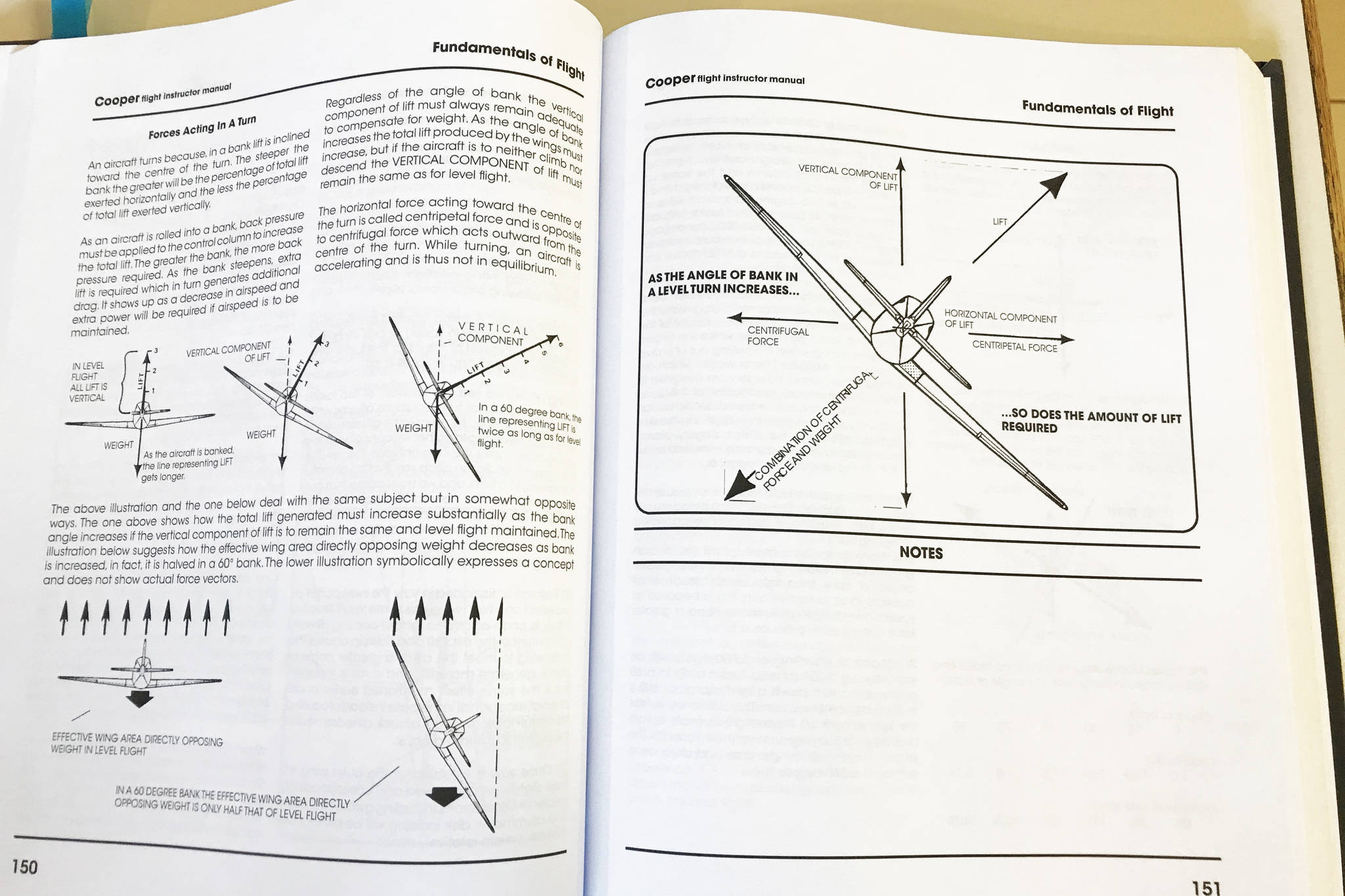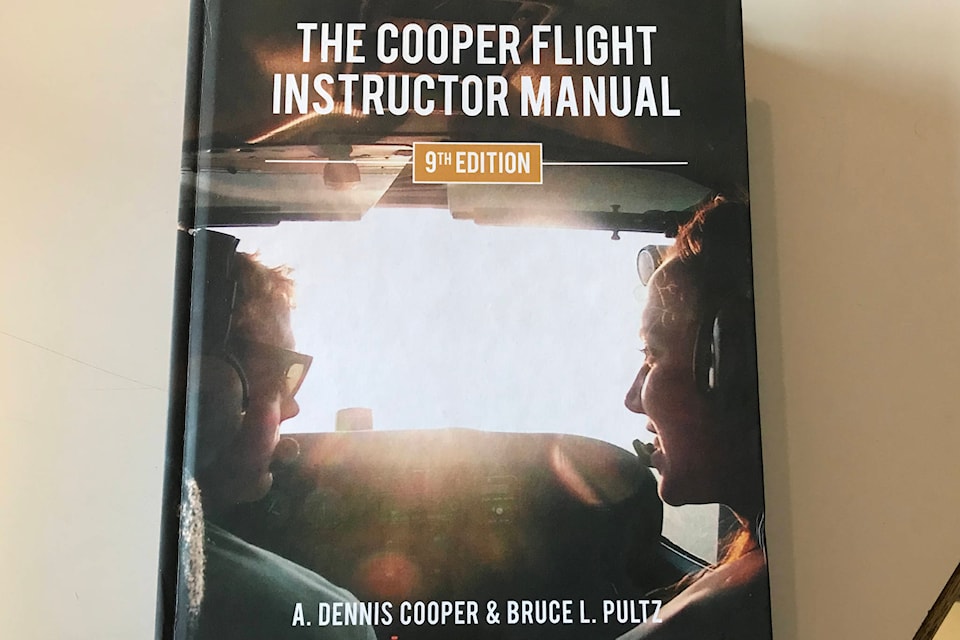Dennis Cooper had his pilot’s licence before he could legally drive a car solo.
The owner of Red Deer Regional Airport-based Sky Wings Aviation Academy always wanted to fly and joined the air cadets in a small town in Saskatchewan.
At 17, he completed his licence requirements at CFB Cold Lake and began a 50-year journey as pilot, instructor — and most recently author.
He has just published The Cooper Flight Instruction Manual, a 646-page bible for fledgling pilots and instructors. He lists flying mentor and former Canadian Forces pilot Bruce Pultz as co-author.
Cooper, whose Red Deer County flight school is in its 38th year and where he has trained thousands of pilots and instructors from all over the world, bought the copyright for the manual a few years ago with eyes on giving it a modern-day makeover.
For Cooper, the book was about more than just creating a how-to guide. He wanted to honour some of the pilots who influenced him, including Pultz, who died a few years ago but left a lasting impression on him and hundreds of other pilots.
“It’s about remembering the things I’ve learned, but also about remembering the people who helped get me here.
“Hopefully, one day someone will say that’s what Dennis did for me,” he said. “By helping teach, that’s my thrill in aviation.
“I’ve gone fast, I’ve gone slow. I’ve flown gliders, done aerobatics, but there’s nothing like the joy of sending someone up solo for the first time.
“It really gives you a satisfaction you can’t really explain.”
The book is dedicated to his wife, Sherry Cooper, who has been named top flight instructor in Canada among other awards. They met when she was a student of his.
When choosing the photo to use on the cover of the manual, Dennis made sure the instructor was a woman.
“It’s because having more and more women in our industry is important,” he said. Only about four per cent of pilots are woman “and we need to be higher.”
The manual was a “labour of love” that took flight when the pandemic grounded training at his school for several months beginning in March.
The previous manual he and other flight schools were using was comprised of entries combined in a loose-leaf binder and was woefully out of date. For instance, it had no mention of global positioning systems (GPS), a standard instrument in any modern aircraft.
“I kept hearing you need to modernize it and bring it up to date.”
The manual’s format and chapter layout were tweaked and it was redesigned to include questions and answers and an index to make it user-friendly. A new scale for marking students was created and other improvements to help instructors.
“We kept some of the original drawings because they were kind of unique. We improved some and we added some.”
A major improvement was to make the manual available as an eBook. As far as Cooper is aware, it is the first Canadian eBook of its kind.
“Today, our students are pulling out their phones and their tablets and looking up things there. They can now put this in their phone or their tablet and use it as a reference.”
Cooper said the potential market is big.
“We know we produce about 1,000 instructors a year in Canada. This book does not only help a beginning instructor but it helps guys who are already established and they want to upgrade.”
Instructing has become an important step for many pilots, who are seeking a career as a commercial pilot.
The book is already available through Amazon and several aviation-related distributors and will be sold in Chapters and other bookstores.
Cooper is also working on instrument rating and commercial piloting manuals. The commercial pilot manual is a massive undertaking that will be comprised of three volumes when complete.
pcowley@reddeeradvocate.com
Like us on Facebook and follow us on Twitter

